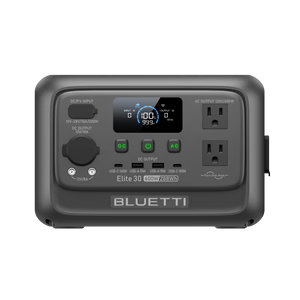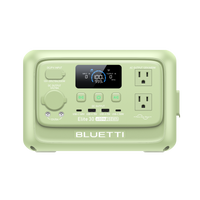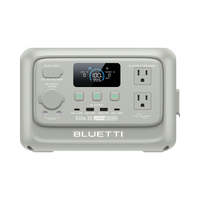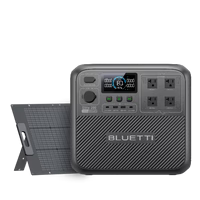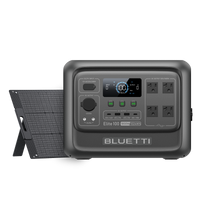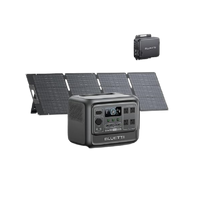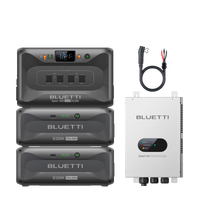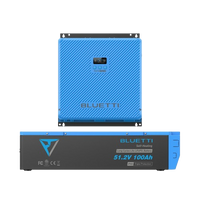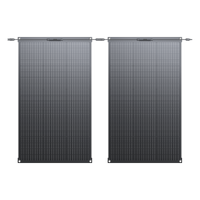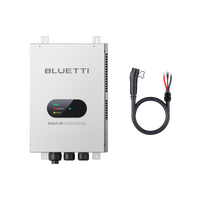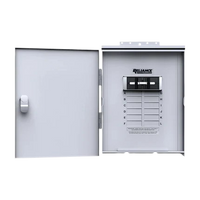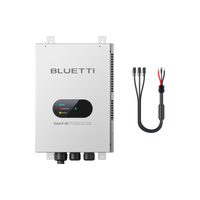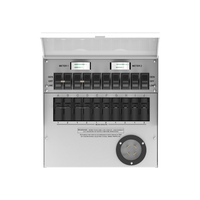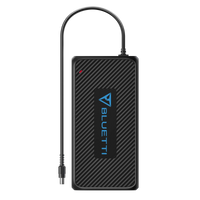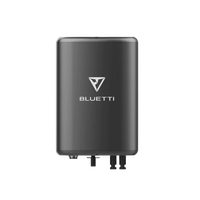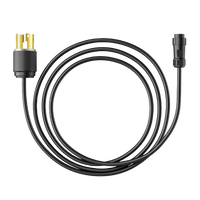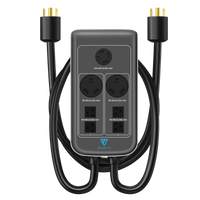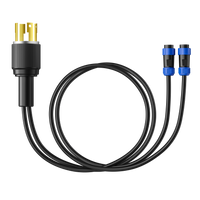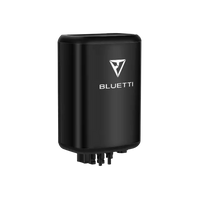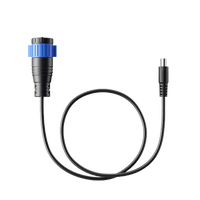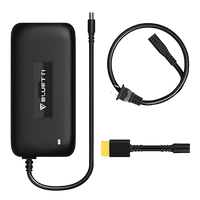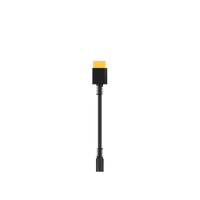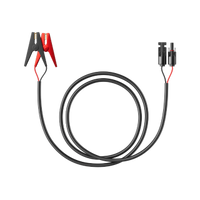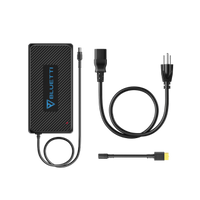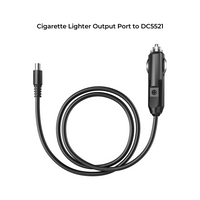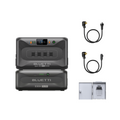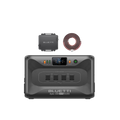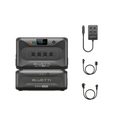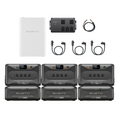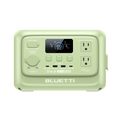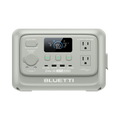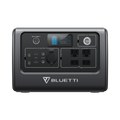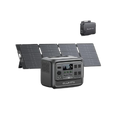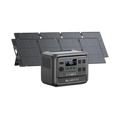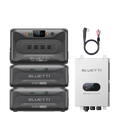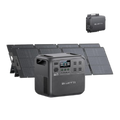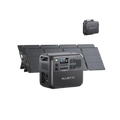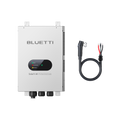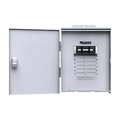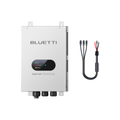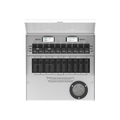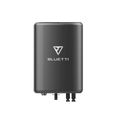Electricity failures may occur unexpectedly. Thus, this can make your fridge become a bomb of rotten food waiting for you. A portable power station can be a significant power source in such situations. These devices can come in many sizes and capacities. Therefore, make sure you buy one that will sufficiently work well with any type of fridge. In this article, you will be able to get an understanding of how a portable power station works to help you realize which version is suitable for powering a fridge. Prepare yourself to discover several ways to power a portable fridge and what power station to pick, and we will review several BLUETTI top portable power stations during the process. Next would be the Q and A on the subject and a conclusion that wraps it all together.
What Is A Portable Power Station?
A mobile electricity station is multifunctional and can not only be used as a substitute source of electricity but also as an independent source of power for gadgets. Since it is provided with a battery, electricity is stored in it and immediately used when needed. Unlike generators that traditionally use combustion engines to produce power, portable power stations derive their electricity directly from rechargeable batteries. These features enable them to be very silent compared to conventional generators and more environmentally friendly.
These power stations typically have vast capacities, high output power, and AC outlets that can be used for charging phones and home equipment. They are lightweight and portable, which makes them easy to carry into various places, such as remote camping. They could also be used as standby power when the grid is down.
Related articles: Is a Portable Power Station Better Than a Generator?
5 Best Portable Power Stations in BLUETTI Canada
What Can You Run on a Portable Power Station?
How Does A Portable Power Station Work?

Portable power stations, popularly known as battery packs or charge supplies, use the stored energy in the battery to generate power. This surplus energy is capable of powering multiple types of electronic equipment and utility appliances. The device is installed with a replaceable battery that can be charged from the wall socket, from the car, or from the sun with a solar panel, according to the different models.
Once the battery is fully charged, both the station and charging equipment can be switched off, and the station will be an output source of mobile energy. Therefore, it is one of the most appropriate instruments in emergencies when backup electricity is not readily available or access to traditional sources is not allowed.
The powerhouse consists of a battery, an inverter, and a group of ports for linking electronic devices. Electric energy is stored in the battery, and this power can be converted into whatever type (AC or DC) your household devices require. The converted electricity is finally delivered to your devices via the outlets or ports.
What Size Portable Power Station Do I Need to Run a Refrigerator?

The choice of a mobile energy station that can run a freezer depends on various facets. These include the knowledge of refrigerator energy needs and the electric capacity of power stations. The main thing is to sync the refrigerator’s wattage requirements with the power station output potential.
Refrigerators vary in size and electricity utilization:
- A mini fridge typically demands between 50 to 100 watts.
- A compact fridge may ask for 100 to 150 watts.
- A standard fridge often utilizes 150 to 250 watts.
To figure out the size of a station required, consider this:
- Battery Capacity (Wh): This energy concentration reveals the amount of energy the power plant can accumulate at any one time. The quotation should be higher than the total wattage of your fridge that will be used during the desired period.
- Inverter Output Power (W): This is the constant power the station can produce. It should be of the same level as or more than the wattage of the refrigerator.
- Surge Power (W): The refrigerator requires a higher power output to start up, especially during its startup stage.
When choosing a portable power station, consider:
- Efficiency: The higher efficiency means that less energy is lost, hence not wasting power.
- Portability: Make it compatible with your requirements.
- Additional Features: Like solar charging capabilities or additional outlets.
How To Power A Portable Fridge With A Portable Power Station?
- Pick the right power station: Ensure that you use a power station big enough to carry the wattage load that your refrigerator takes. You need to choose a model with a larger battery capacity than the power your fridge takes at any given time.
- Checking Your Fridge for Use of Power: Find out the wattage of the fridge, which is normally indicated in the user's guide, or check with the website of the manufacturer. Of course, the refrigerator must be able to run properly and smoothly with enough power from the battery and be able to run for a proper time without draining out in a very short period.
- Connect Power Station to Fridge: Choose cables that connect the power station to the fridge. Place the power station in an open place with fresh air to avoid overheating.
- Monitor the amount of power that is being consumed: Monitor carefully the reserves that go to the power station. Some fridges have monitors built-in with them, while you can use a multimeter to check the voltage rating in the power station.
- Station Attending: The power station may be attended by routine maintenance effects on charging. This can ensure an extension in the life of the generator and, therefore, increase reliability. The manufacturer's guide will be useful for checking on ways in which the life of the generator can be extended.
How To Choose A Portable Power Station?
- Power Assessment: You will establish the total wattage and estimate the total wattage hours that will be needed by all devices to be operated in a single day. This will help you determine the capacity of the least-capacity power station that will operate your devices.
- Battery Type: It is important and recommended to use lithium-ion batteries because they have the characteristics of high-power-to-weight efficiency, fast-charge capability, and service for a longer time. Going down to the sub-categories, lithium-ion under Lifepo4 is the best at life and safety.
- Capacity Calculation: Your generating capacity should be above the wattage that your fridge uses. This implies that to run a 50W fridge for 24 hours, you need to have nothing less than a 1200Wh capacity.
- Inverter Output: Make sure that your fridge's wattage is not more than the power station's inverter can handle.
- Recharge Time: Pick a power station that can recharge fast and has a controller for use with solar panels.
- Portability and Price: Choose a low-cost, portable power station that is not excessively heavy while ensuring top-notch quality and rich functionality.
BLUETTI Portable Power Stations
BLUETTI AC200MAX Portable Power Station

The robust setup offers a 2200-watt AC pure sine wave inverter. Besides the 4800W peak surge, its 2,048Wh LiFePO4 battery also has a lifespan of over 3,500 cycles and 80% capacity over this time. Its capacity allows space for expansion up to 8,192Wh using extra batteries, which are convenient for meeting huge power demands. AC200MAX has 7 charging methods, one by solar and a maximum of 900W input by solar. It has the capability of fast charging(DC Charging) at 1,400W, resulting in charging at high power. Users can monitor and manage the power station functionality through the app, thereby putting power in their hands while away from home.
BLUETTI AC200L Portable Power Station

This displays a 2400W AC output and a 3600-watt powerlifting-based mode. Besides that, it is also of the same 2,048Wh capacity as the AC200MAX and can be expanded up to 8,192Wh. Among the key features is AC200L’s fast charging that allows reaching 80% state of charge in as little as 45 minutes with an input of 2,400W AC. In addition to a max 1200W solar input, it comes with 6 recharging options. The system is a good choice for those who need a fast-charging power source that integrates Bluetooth and WiFi for smart control features, as well as quiet operation and efficient UPS.
BLUETTI EP500Pro Solar Power Station

This features a 5,120Wh LiFePO4 battery, which can last 3,500+ cycles at 80% capacity. The generator delivers 3,000W of pure sine wave output, which can be used to run multiple devices at the same time. Also, these mobile power stations possess both in-grid and flexible UPSs that provide a constant power supply. One of its convenience highlights is that it has a variety of recharging modes to keep it up and ready to be used. Besides, the system provides an app remote control and a smart touch screen that improves the experience of interaction and convenience.
FAQs About Portable Power Station
- How Long Will a Portable Power Station Last?
The lifespan is between 5 and 15 years, and it is determined by usage and battery characteristics.
- Can I Run a TV on a Portable Power Station?
Yes, most TVs can be operated as long as they have the appropriate power requirements.
- Are Portable Power Stations Worth It?
Once powered by actual batteries, portable power stations can be used for backup power and outdoor activities-related tasks.
Final Thoughts
Finally, on-the-go power stations are a multi-purpose and vital equipment for modern life. Regardless of whether it is for emergency preparedness, outdoor activities, or just as a backup power source, they are useful as they are conveniently reliable. While selecting a power station, think about its capacity and lightweight and how it can be applicable to your devices. With the appropriate power station, you can maintain your refrigerator, as well as other vital appliances, in good working condition, which is essential for a comfortable environment and a sense of security even if you are in outdoor or uncertain situations.






